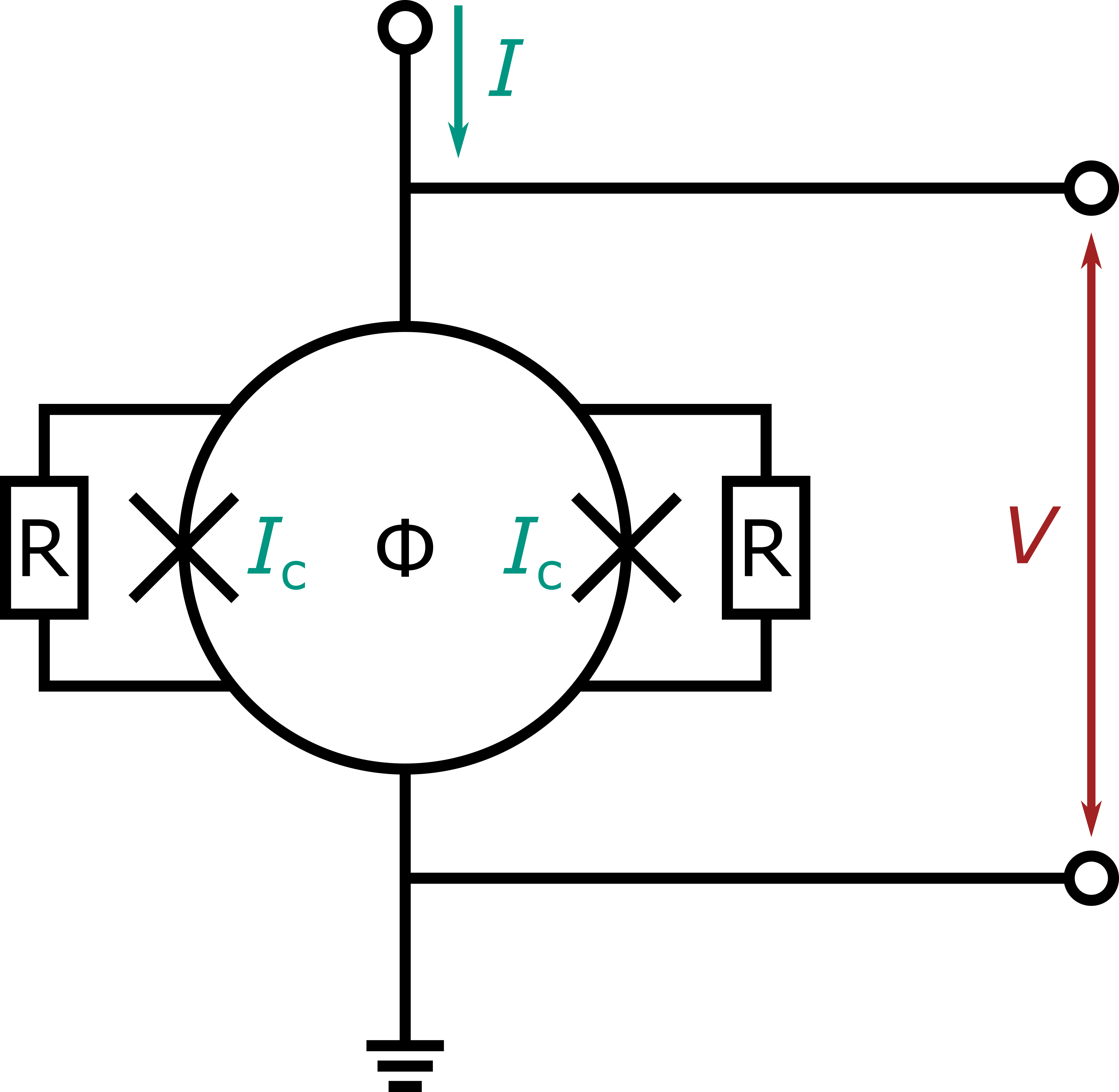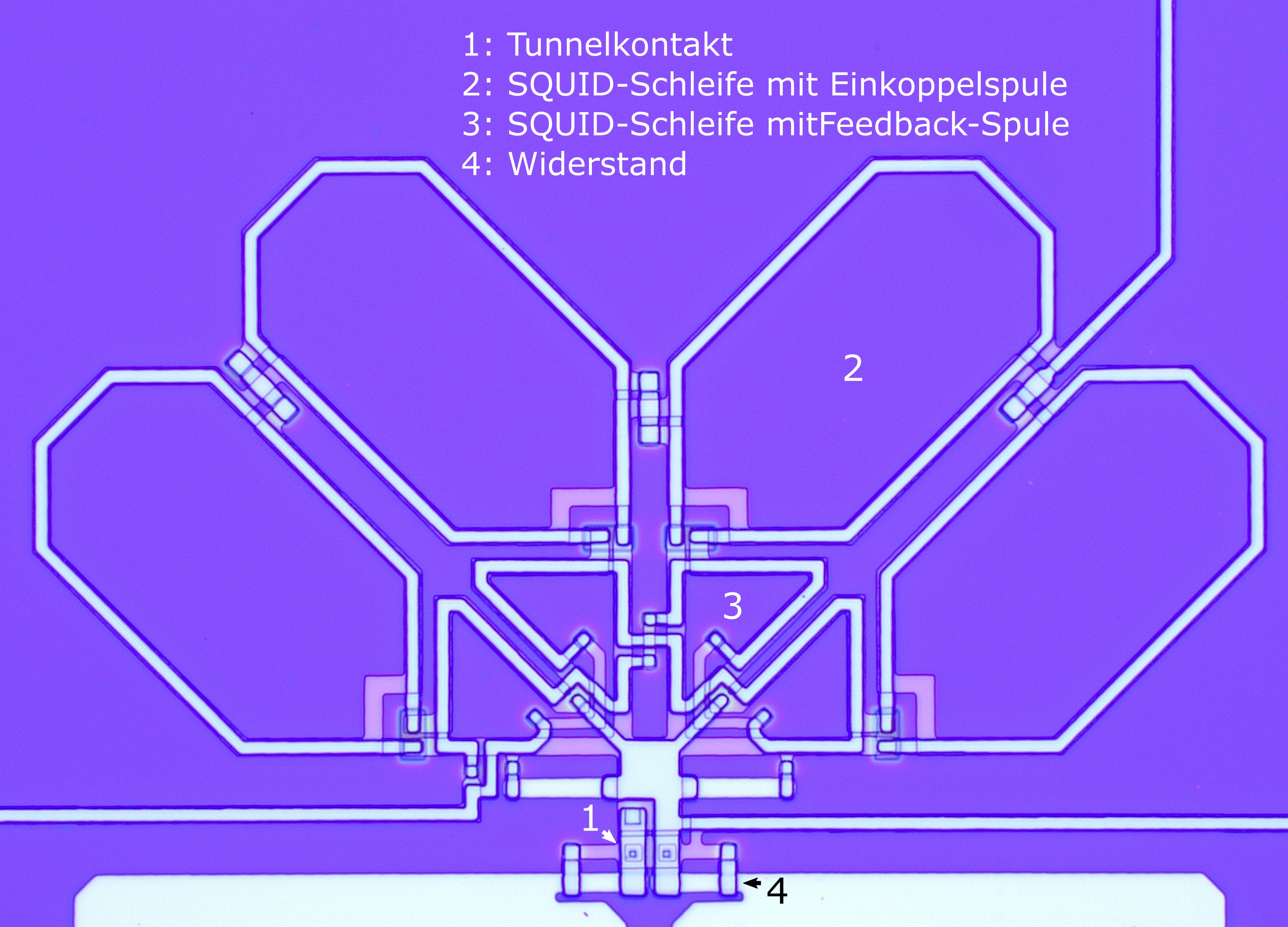dc-SQUID-based current sensors and magnetometers

Superconducting Quantum Interference Devices (dc-SQUIDs) operated with dc current are highly sensitive devices measuring magnetic flux with utmost precision. A schematic circuit diagram of a simple dc-SQUID is depicted in figure 1. It consists of a closed superconducting loop interrupted by two Josephson tunnel junctions. Each Josephson tunnel junction has the critical current Ic and is shunted by a resistance R, to suppress a hysteretic behaviour. Due to quantum mechanical interference effects, the output signal of a SQUID depends on the magnetic flux threading its loop. For example, if a dc-SQUID os operated at a constant bias current Ib, the voltage across the SQUID changes periodically with the magnetic flux Φ (see figure 2).

which was fabricated and charaterised at the IMS. It is clearly visible how the current-voltage characteristic
changes with the magnetic flux. At a constant bias current, this results in a flux dependent voltage across the SQUID.
Fundamentally, a SQUID detects even the slightest changes in magnetic flux. Considering however that many physical quantities, it becomes clear that SQUIDs can also be applied to measure magnetic fields, currents or voltage with excellent precision. An additional application are SQUID-based particle detectors such as magnetic mikro-calorimeters (MMCs), which have gathered significant attention in recent years.

The symmetric arrangement of four loops connected in
parallel helps to mitigate background magnetic fields.
The input loop is connected to the MMC, the feedback coil
is essential for SQUID readout and operation.

with two symmetric loops connected in series.
The spiral shaped field coils are clearly visible.
The Josephson junctions are placed near the centre.
The research at the IMS in this field focuses on the development and fabrication of dc-SQUIDs for the readout of particle detectors. Additionally, we work on advanced readout schemes (so-called multiplexing) to read out very large numbers of detector simultaneously. With a microwave-SQUID-multiplexer (µMUX), a very large number of SQUIDs can be operated with just a few electrical connection lines. At the IMS, we also work on SQUIDs for highly specialized applications, such as susceptometer-SQUIDs for the research on the magnetic properties of microscopic samples. As a small insight into the wealth of SQUID developments at the IMS, figures 3 and 4 depict micrographs of different SQUID types developed and manufactured in-house at the IMS. Compared to the simplified schematic shown in figure 1, real SQUIDs typically consist of multiple, symmetrically arranged loops connected in series or in parallel. In this way, background magnetic fields like that of the earth can be suppressed, and depending on the application the SQUID performance can be enhanced.

